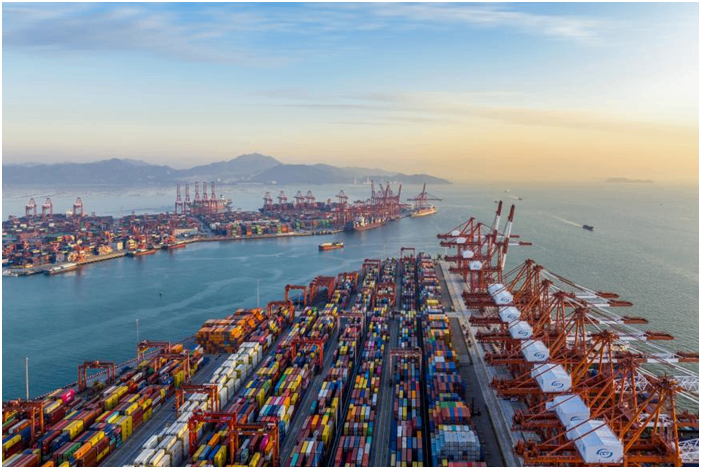On October 10 (local time), the World Bank (WB) released its latest Global Economic Prospects report, stating that intensified tensions and policy uncertainties will drive global economic growth to its slowest pace since 2008 this year.
The WB noted that this has led to growth forecasts being downscaled for nearly 70% of economies. Global growth is projected to slow to 2.3% in 2025, nearly 0.5 percentage points lower than the forecast at the start of the year. However, the WB said a global economic recession is not expected.
In the report, the WB expects developed economies to grow by 1.2% this year, 0.5 percentage points lower than previously forecast. Among them, the US economic growth rate is significantly reduced from the previous 2.3% to 1.4%. The economic growth rates of the eurozone and Japan are both revised down to 0.7%.
Image Source:699pic.com
Nearly 60% of Developing Economies Will Also Experience Slowdowns
According to CCTV reports, economic growth in emerging markets and developing economies is expected to be 3.8% this year, 0.3 percentage points lower than the previous forecast. Notably, economic growth in the developing world outside Asia is now in a state of overall stagnation.
Specifically, the WB expects nearly 60% of developing economies to see a slowdown in growth this year, with an average growth rate of 3.8% in 2025, edging up slightly to an average of 3.9% in 2026 and 2027.
Indermit Gill, Chief Economist and Senior Vice President for Development Economics at the World Bank Group, said: "The growth rate of developing economies has been declining for three decades, falling from an average of 6% in the first decade of the 21st century to 5% in the second decade, and then to below 4% in the third decade. This is in line with the growth trajectory of global trade, which has declined from an average of 5% in the first decade of the 21st century to about 4.5% in the second decade, and to below 3% in the third decade. Investment growth has also slowed, but debt has been climbing to record levels."
The WB stated that increased tariffs and tightening labor markets have also exerted upward pressure on global inflation, projecting the global inflation rate to average 2.9% in 2025, still higher than pre-pandemic levels.
The WB noted that the slowdown in growth will hinder developing economies' efforts to promote job creation, reduce extreme poverty, and narrow the per capita income gap with developed economies. Per capita income growth in developing economies is expected to be 2.9% in 2025, 1.1 percentage points lower than the average during 2000–2019.
Changes in Global Trade Policies
The WB proposed that the global economy will experience a weak rebound in 2026 and 2027, noting that progress in emerging markets and developing economies to narrow per capita income gaps with developed economies and reduce extreme poverty will remain insufficient. Their prospects depend heavily on changes in global trade policies.
The WB said that if major economies can ease trade tensions, thereby reducing overall policy uncertainty and financial volatility, the global economic growth rebound could be faster than expected.
Analysis shows that if current trade disputes can be resolved by reaching an agreement to halve tariffs based on levels in late May, global growth in 2025 and 2026 could be 0.2 percentage points higher on average.
The report also suggests that in the face of rising trade barriers, developing economies should seek to establish strategic trade and investment partnerships with other economies, promote trade diversification—including through regional agreements—and pursue a broader open landscape.
By region, the WB forecasts that economic growth in the East Asia and Pacific region will slow to 4.5% in 2025, further easing to 4.0% in 2026–2027; growth in Europe and Central Asia will slow to 2.4% in 2025, edging up slightly to 2.6% in 2026–2027.
Growth in the Middle East and North Africa is expected to accelerate to 2.7% in 2025 and further to an average of 3.9% in 2026–2027; growth in South Asia is projected to slow to 5.8% in 2025 and stabilize at an average of 6.2% in 2026–2027.



